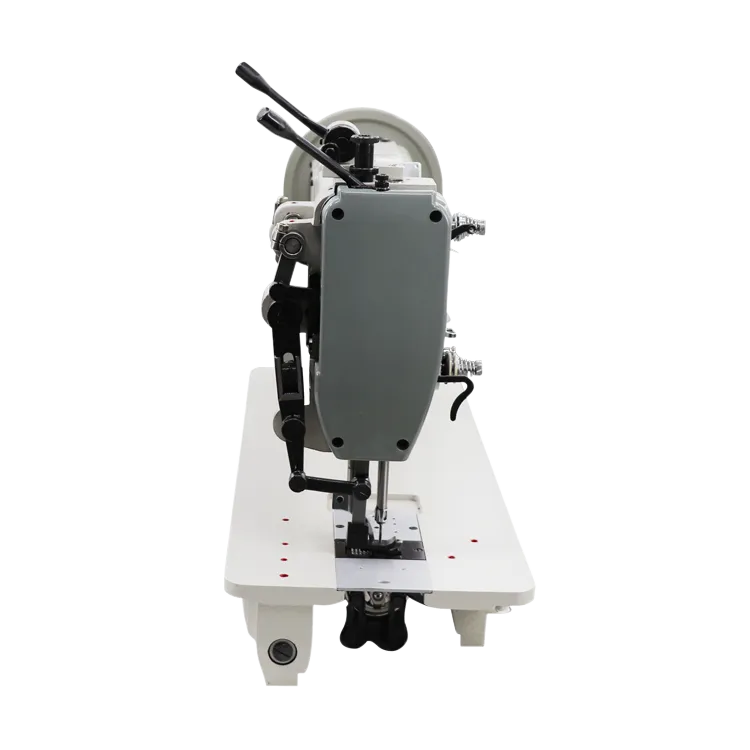Affordable Options for Automatic Sewing Machines and Their Price Ranges in Today's Market
Understanding Auto Sewing Machine Prices Factors and Trends
In recent years, the demand for auto sewing machines has surged, thanks in part to the rise of DIY culture, fashion design, and home sewing projects. These machines offer convenience, efficiency, and a level of automation that allows both amateurs and professionals to create high-quality garments and crafts with ease. However, as with any piece of technology, the prices of auto sewing machines can vary greatly based on a multitude of factors. Understanding these factors can help consumers make informed decisions when purchasing their next sewing machine.
1. Features and Functionality
The price of an auto sewing machine is largely influenced by its features and functionalities. Basic models, which may only include essential stitch options, can be quite affordable, often ranging from $100 to $300. On the other hand, machines equipped with advanced features such as multiple stitch patterns, automatic thread cutting, built-in embroidery functions, and digital displays can cost anywhere from $500 to well over $2000. For instance, quilting machines or embroidery machines that allow users to create intricate designs automatically are on the higher end of the price spectrum.
2. Brand Reputation
Brand plays a significant role in determining sewing machine prices. Established brands known for their quality and durability, such as Brother, Janome, and Bernina, generally command higher prices due to their reputation and reliability. These brands invest in research and development to improve their machines' performance, which may justify the higher costs for consumers seeking long-lasting products. Moreover, consumer support and warranty packages from reputable brands add value, often making their machines worth the investment.
3. Target User
auto sewing machine price

The target market for a sewing machine also impacts pricing. Entry-level machines designed for beginners are affordable and user-friendly, typically aimed at hobbyists or those new to sewing. Conversely, professional-grade machines with enhanced features designed for frequent or industrial use will be much pricier. As a consumer, evaluating your skill level and sewing needs is essential—the machine suited for a casual hobbyist will be different from that required by a professional tailor or designer.
4. Technological Advancements
The integration of technology has transformed sewing machines into sophisticated tools. Smart sewing machines that can connect to smartphones or tablets via Bluetooth for pattern downloads, instructional videos, or tutorials are becoming more common. As these advancements continue, the price of these technologically enhanced machines rises accordingly. Innovations such as automated fabric feeding systems and laser cutting capabilities are driving prices higher but also provide incredible benefits that can save time and increase precision in sewing projects.
5. Seasonal Sales and Discounts
Another factor to consider in pricing is the timing of your purchase. Sewing machines are often discounted during promotional events such as Black Friday, Cyber Monday, or spring sales. Retailers may also offer discounts on previous year’s models to make way for newer inventory. Shoppers looking for a bargain can significantly benefit from keeping an eye on seasonal sales and clearance events, allowing them to purchase a higher-quality machine for a lower price.
Conclusion
Understanding the factors influencing auto sewing machine prices is crucial for potential buyers. From selecting the right features to considering the brand and technological advancements, consumers should evaluate their needs and budget carefully. By taking the time to research and compare prices across various platforms, buyers can find the ideal sewing machine that balances quality, functionality, and cost. Whether you’re a seasoned professional or just starting out, the right sewing machine can make all the difference in bringing your creative visions to life.
-
Leather Sewing Machine: The Industrial Standard for Tough MaterialsNewsJul.18,2025
-
Sail Making Machine: Heavy-Duty Stitching for Industrial and Marine NeedsNewsJul.18,2025
-
Sling Sewing Machine: The Backbone of Heavy-Duty FabricationNewsJul.18,2025
-
Leather Sewing Machine: Precision for Heavy-Duty StitchingNewsJul.18,2025
-
Big Bag Sewing Machine: Powering the Future of Bulk PackagingNewsJul.18,2025
-
FIBC Sewing Machine: Essential Equipment for Bulk Bag ProductionNewsJul.18,2025
-
Heavy Duty Leather Sewing Machine: A Must-Have for Professional LeatherworkNewsMay.28,2025





























